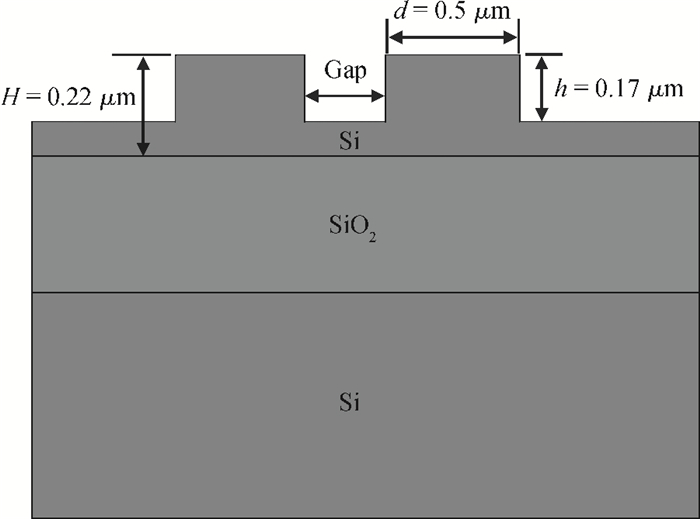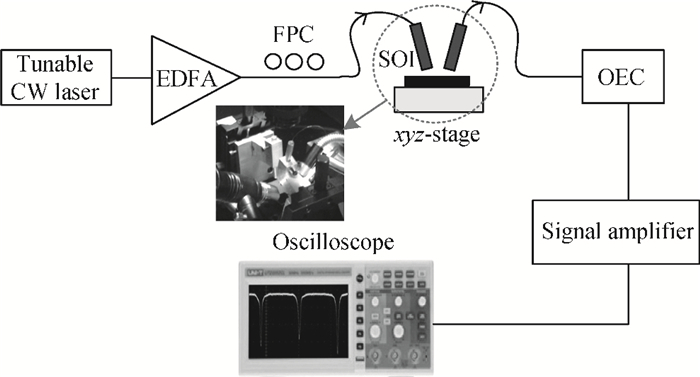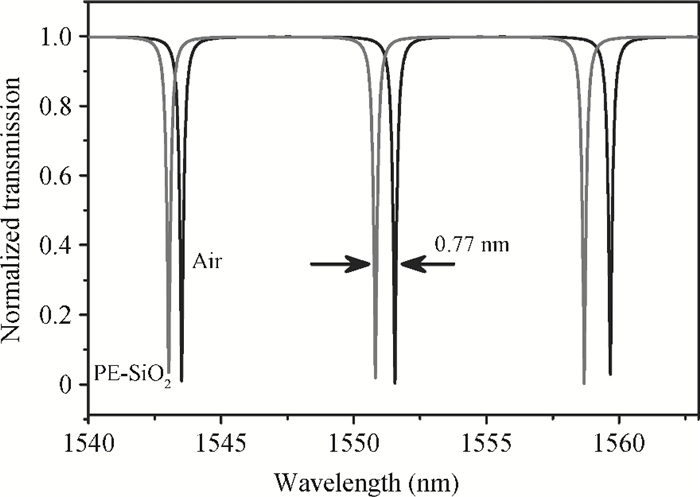| Citation: |
Junbin Zang, Chenyang Xue, Liping Wei, Chao Liu, Danfeng Cui, Yonghua Wang, Wendong Zhang. The resonance frequency shift in an SOI nano-waveguide microring resonator[J]. Journal of Semiconductors, 2013, 34(4): 044009. doi: 10.1088/1674-4926/34/4/044009
****
J B Zang, C Y Xue, L P Wei, C Liu, D F Cui, Y H Wang, W D Zhang. The resonance frequency shift in an SOI nano-waveguide microring resonator[J]. J. Semicond., 2013, 34(4): 044009. doi: 10.1088/1674-4926/34/4/044009.
|
The resonance frequency shift in an SOI nano-waveguide microring resonator
DOI: 10.1088/1674-4926/34/4/044009
More Information
-
Abstract
To research the effect of a deposited SiO2 insulating layer on the resonance frequency modulation of an SOI nanowaveguide ring cavity during integration fabrication, a rib waveguide ring resonator was systematically designed and fabricated. SiO2 insulating layers with different thicknesses were deposited for analysis of the frequency shift characteristics. By testing the resonance transmission spectrum power of this structure, it is found that there are blue shifts after SiO2 deposition, and the frequency shift value of a structure with a 500 nm SiO2 insulating layer deposited is 0.8 nm, that is 0.24 THz at the resonance point where wavelength is around 1550 nm. Taking advantage of this conclusion, efficient optical modulation is available by choosing different frequency band resonance wavelengths to narrow the frequency modulation range. -
References
[1] Miller D A B. Rationale and challenges for optical interconnects to electronic chips. Proc IEEE, 2000, 88(6):728 doi: 10.1109/5.867687[2] Shacham A, Bergman K, Carloni L P. Photonic networks-on-chip for future generations of chip multiprocessors. IEEE Trans Comput, 2008, 57(9):1246 doi: 10.1109/TC.2008.78[3] Yu Changliang, Mao Luhong, Xiao Xindong, et al. An approach to the optical interconnects made in standard CMOS process. Journal of Semiconductors, 2009, 30(5):055012 doi: 10.1088/1674-4926/30/5/055012[4] Huang Q, Yu Y, Yu J. Experimental investigation on submicron rib waveguide microring/racetrack resonators in silicon-on-insulator. Opt Commun, 2009, 282:22 doi: 10.1016/j.optcom.2008.09.052[5] Pernice W H P, Xiong C, Tang H X. High Q micro-ring resonators fabricated from polycrystalline aluminum nitride films for near infrared and visible photonics. Opt Express, 2012, 20(11):12261 doi: 10.1364/OE.20.012261[6] Preston K, Manipatruni S, Gondarenko A. Deposited silicon high-speed integrated electro-optic modulator. Opt Express, 2009, 17(7):5118 doi: 10.1364/OE.17.005118[7] Choi J M, Lee R K, Yariv A. Control of critical coupling in a ring resonator-fiber configuration:application to wavelength-selective switching, modulation, amplification, and oscillation. Opt Lett, 2001, 26:1236 doi: 10.1364/OL.26.001236[8] Zhang Yunxiao, Liao Zaiyi, Zhao Lingjuan, et al. A high-efficiency high-power evanescently coupled UTC-photodiode. Journal of Semiconductors, 2009, 30(4):044008 doi: 10.1088/1674-4926/30/4/044008[9] Levi A F J, Slusher R E, McCall S L, et al. Directional light coupling from microdisk lasers. Appl Phys Lett, 1993, 62(6):561 doi: 10.1063/1.108911[10] Ling T, Chen S L, Guo L J. Fabrication and characterization of high Q polymer micro-ring resonator and its application as a sensitive ultrasonic detector. Opt Express, 2011, 19(2):861 doi: 10.1364/OE.19.000861[11] De Vos K, Bartolozzi I, Schacht E. Silicon-on-insulator microring resonator for sensitive and label-free biosesing. Opt Express, 2007, 15(12):7610 doi: 10.1364/OE.15.007610[12] Huang Q, Yu J, Chen S, et al. High Q microring resonator in silicon-on-insulator rib waveguide. Proc SPIE, 2007, 6838:68380J doi: 10.1117/12.760218[13] Xu Q, Fattal D, Beausoleil R G. Silicon microring resonators with 1.5-μ m radius. Opt Express, 2008, 16(6):4309 doi: 10.1364/OE.16.004309[14] Bogaerts W, Baets R, Dumon P, et al. Nanophotonic waveguides in silicon-on-insulator fabricated with CMOS technology. J Lightwave Technol, 2005, 23(1):401 doi: 10.1109/JLT.2004.834471[15] Yariv A. Critical coupling and its control in optical waveguide-ring resonator systems. IEEE Photonics Technol Lett, 2002, 14:483 doi: 10.1109/68.992585 -
Proportional views






 DownLoad:
DownLoad:



















